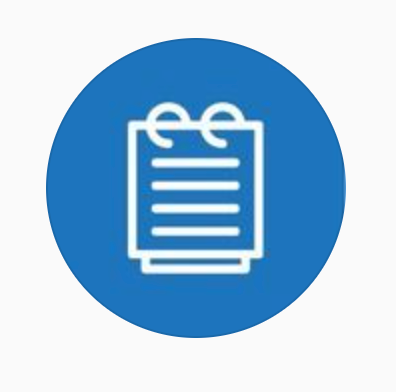In Canada (and elsewhere) we are facing unprecedented barriers in accessing physicians (both primary care & specialty care) & other healthcare providers.
Many barriers exist, but lack of time is a major contributor to lack of physicians access. There are only so many hours in the day.
There is a huge opportunity to enhance & modify IT processes to give healthcare providers back time that can then be reinvested in patient care. HCP time is a zero-sum game.
Time we lose gets taken from another source – usually patient care.
If doctors are wasting 15% of their time on low value/no-value activities (a very conservative estimate), should this time be recaptured, it could be invested back into patient care. In a fee-for-service model, this is a win-win opportunity. We improve access to doctors without recruiting while doctors remain incentivized by the fee for service model.
I work in Fraser Health, BC’s largest health authority and will share ideas on how IT could help find more time for HCPs in its 12 hospitals. For all these ideas, let’s assume privacy & security will be sorted out. Many of these suggestions are essentially MEDITECH suggestions (the EHR used in FHA) but many could be implemented quite simply.
1. Achieve faster boot up and login for hospital computers running on Windows
Hospital computers are painfully slow to load with many processes running at boot up/login. For a consultant seeing 25 patients in a day, if it takes 3 minutes to reboot/login to each computer, that’s 1h and 15 minutes spent waiting for a computer to turn on, while literally staring at a blank screen.
Let’s get this down to 5 seconds per login.
If someone else is already logged in to a computer, allow a new user to login without having to do a 6 minute computer restart. We have to share computers. That feature is available, but locked out.
2. Create & share custom patient lists on MEDITECH
For those not MRP but still following patients, eg all consultants, currently no ability to easily track or find location of ones patients.
When patients move to a new location, the clinician doesn’t know and often wastes time walking to the wrong location & searching for your patient.
How about working with MEDITECH to create an “add to my list” feature.
Then be able to share these lists so that members of the same team (or colleagues covering on call) can easily share patient care.
3. Push notifications
It’s 2022 and mobile devices are here to stay.
Push notifications (PNs) are a powerful solution to be alerted to time sensitive results.
When waiting for lab/imaging results, clinicians have no idea when or if an important result is available, unless they manually search for it repeatedly throughout the day.
How about tagging results that you want PNs for?
Waiting for a CBC or creatinine before discharging a patient? Get the PN and then discharge once patient is stable.
Or get a PN with critical results so the ward staff don’t need to wasted tracking down the MD.
For implementation, obviously no PHI in the PN, just deep link into a secure mobile portal. And create algos to avoid excess noise.
4. Missing lab tests
MEDITECH does not allow one to differentiate if blood tests are just pending in the lab vs not actually drawn. Make this more clear so that missing tests can drive action. Currently, one doesn’t generally clue in that “pending” results are never coming.
5. Who’s caring for which patient?
At present, there is no clear solution to determine who is looking after each patient. Even if we sorted this out for the daytime hours, healthcare is a 24h operation. MRP coverage can changes 1-2 time per 24h period. Each patient can have multiple consultants, and eachh consulting service can change covering MD 1-2 time per 24h period. If you get the name of the appropriate MD, it is then cumbersome to get their contact info. And then unclear how to find that person through secure messaging/phone. Let’s solve this in the EHR or an integrated solution.
6. Create workflow & standardized communication for urgent & emergent medical imaging
At present, if urgent imaging is required, it can be very time consuming to figure out who to talk to. Most physicians will have to physically walk to the radiology department to find a radiologist to speak with. Many just order enter and hope it gets done in a timely fashion. Neither option is efficient.
Must create a solution to connect via digital devices (voice/messaging) with the correct radiologist. Can be asynchronous but must be fast/efficient.
Of course, also need solution for automated alerting when the desired images have been taken, rather than logging into a computer and reloading repeatedly.
7. Vital signs
Clinicians spend an incredible amount of time trying to find handwritten vital signs. They likely spend 3-6 minutes per patient looking for vital signs. For a consultant seeing 25 patients in a day, that’s ≥ 1h and 15 min spent wandering around looks for vital signs.
Often, HCPs give up and never review them.
This also applies to any other bedside records (glucose monitoring, weights, med administration, etc)
The feature already exists but is not used widely within the organization.
8. Smartphone access
It’s 2022. Provide app-based access to EHR and all process issues described in this list. We spend too much time hunting for free computers and waiting to login, yet everyone has a smartphone in their pocket.
If we do make smartphones part of our workflow, batteries will die. Wired and wireless recharging must be ubiquitous.
9. Facilitate seamless inpatient to outpatient care
Patients being discharged are at high risk of readmission and often need close outpatient followup. However, there is no seamless method to arrange follow up in a private MD office, and have pending imaging/labs forwarded to the outpatient setting. Current methods are prone to error, time consuming and allow patients to slip through the cracks.
10. Getting/replacing hospital ID
Hospital ID cards are required for opening most doors and accessing the computer system. It’s effectively impossible to work in the hospital if one loses an ID card. Currently take days to weeks to replace an ID card and impossible to solve outside regular business hours. However, hospitals run 128 h/week outside of regular business hours.
Hotels can replace a card in 60 seconds. Need to change processes so that in the unlikely event of a lost card, we don’t lose a clinician for hours to days. The temporary card replacement solution in place has significant barriers and effectively doesn’t work. It must be fast & work after regular hours.



Recent Comments